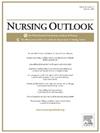Exploring condom use intentions among urban Black emerging adult men
IF 4.1
2区 医学
Q1 NURSING
引用次数: 0
Abstract
Background
Sexually transmitted infections (STIs) disproportionately impact young Black emerging adult men (BEAM) in the United States, underscoring the need to understand their sexual risk behaviors.
Purpose
This study aimed to evaluate the constructs of the Theory of Planned Behavior and population-specific factors associated with condom use intentions among BEAMS.
Methods
A secondary analysis of baseline data from 618 BEAMs participating in a randomized HIV/STI risk reduction intervention trial implemented in barbershops was conducted using multiple linear regression.
Discussion
The regression analysis revealed that higher subjective norm (β = 0.16, p < .001), descriptive norm (β = 0.08, p < .01), attitude (β = 0.30, p < .001), self-efficacy (β = 0.41, p < .001), and hypermasculinity (β = 0.06, p < .01) were associated with greater condom use intention.
Conclusion
These findings suggest that interventions aimed at increasing condom use intentions among BEAMs should focus on enhancing subjective norms, descriptive norms, attitude, self-efficacy, and hypermasculinity.
探讨城市黑人新成年男性使用安全套的意向
在美国,性传播感染(STIs)不成比例地影响着年轻的黑人成年男性(BEAM),这强调了了解他们的性风险行为的必要性。目的本研究旨在评估计划行为理论的构建和与人口特异性因素有关的避孕套使用意愿。方法采用多元线性回归方法对618名参与理发店随机降低HIV/STI风险干预试验的beam基线数据进行二次分析。回归分析显示,主观规范越高(β = 0.16, p <;.001),描述规范(β = 0.08, p <;.01),态度(β = 0.30, p <;.001)、自我效能感(β = 0.41, p <;.001),和过度男性化(β = 0.06, p <;.01)与更大的安全套使用意愿相关。结论提高男性男性使用安全套意愿的干预措施应侧重于增强主观规范、描述性规范、态度、自我效能感和超男性化。
本文章由计算机程序翻译,如有差异,请以英文原文为准。
求助全文
约1分钟内获得全文
求助全文
来源期刊

Nursing Outlook
医学-护理
CiteScore
6.20
自引率
7.00%
发文量
109
审稿时长
25 days
期刊介绍:
Nursing Outlook, a bimonthly journal, provides innovative ideas for nursing leaders through peer-reviewed articles and timely reports. Each issue examines current issues and trends in nursing practice, education, and research, offering progressive solutions to the challenges facing the profession. Nursing Outlook is the official journal of the American Academy of Nursing and the Council for the Advancement of Nursing Science and supports their mission to serve the public and the nursing profession by advancing health policy and practice through the generation, synthesis, and dissemination of nursing knowledge. The journal is included in MEDLINE, CINAHL and the Journal Citation Reports published by Clarivate Analytics.
 求助内容:
求助内容: 应助结果提醒方式:
应助结果提醒方式:


